HYBRID EVENT: You can participate in person at Barcelona, Spain from your home or work.
Captive Breeding in Aquaculture
Captive Breeding in Aquaculture
Captive breeding in aquaculture refers to breeding aquatic species in controlled environments to ensure a steady supply for production or conservation. This practice helps maintain genetic diversity, improve disease resistance, and reduce the pressure on wild populations. Captive breeding also enables aquaculturists to select for desirable traits, such as faster growth and better feed conversion, thus enhancing production efficiency. Moreover, captive breeding plays a vital role in conservation efforts by supporting the restoration of endangered species. By improving breeding programs and farm management, captive breeding can ensure sustainable aquaculture practices and biodiversity conservation.
Committee Members

Perry Raso
Matunuck Oyster Farm, United States
J L Giovanna Hesley
Education Emerita, CropKing Inc., United States
Virendra Kumar Goswami
Indian Institute of Technology, India WAC 2026 Speakers

Amit Das
Memorial University of Newfoundland, Canada
Mandeep Kaur
Panjab University, India
Pavarot Noranarttragoon
Department of Fisheries, Thailand



Title : Application of Artificial Intelligence and NISAR satellite to study the air sea CO2 exchange and aquatic toxicology to develop ‘Aquatic Pollution Remediation Technologies’(PART)
Virendra Kumar Goswami, Indian Institute of Technology, India
Title : Conditionally pathogenic microparasites (Microsporidia and Myxosporea) of mullet fish potential objects of mariculture in the Black and Azov Seas
Violetta M Yurakhno, A. O. Kovalevsky Institute of Biology of the Southern Seas of Russian Academy of Sciences, Russian Federation
Title : New approaches to assessing and managing the multispecies fishery in the Gulf of Thailand
Pavarot Noranarttragoon, Department of Fisheries, Thailand
Title : Integrating art, science and rural development: The multifaced role of aquarium keeping
T V Anna Mercy, Kerala University of Fisheries and Ocean Studies, India
Title : Seaweed aquaculture policy gap analyses in Indonesia, Kenya, and Tanzania
Megan Considine, The Nature Conservancy, Puerto Rico
Title : Utilizing art to enhance learning STEM subjects required for aquaculture
J L Giovanna Hesley, Education Emerita, CropKing Inc., United States